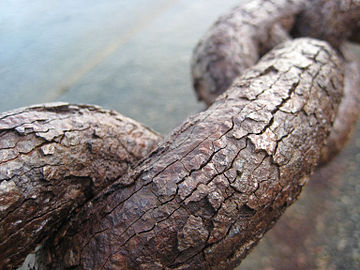Ho sabíeu?
Podeu fer doble clic en una paraula per a buscar-la a TermGallery.
Podeu fer doble clic en una paraula per a buscar-la a TermGallery.
Significats de oxidation-reduction en anglès

A reversible chemical reaction in which one reaction is an oxidation and the reverse is a reduction.
Sinònims
Examples for "redox"
Examples for "redox"
1
However, the identity of most redox-regulated mitochondrial proteins remains to be defined.
2
This process obviates the need for exogenous enzymes and redox mediator supplements.
3
These findings reveal a new layer of nitroso-redox imbalance in dystrophic cardiomyopathy.
4
These single-domain flavoenzymes display redox potentials compatible with electron transfer between partners.
5
Hence, there is interest in redox and metabolic modulators as anticancer agents.
1
Functional categorization of the 55 induced genes revealed that most were either related to carbon metabolism, membrane proteins, or were involved in oxidoreduction reactions.
Ús de oxidation-reduction en anglès
1
Iron-sulfur clusters are prosthetic groups commonly found in proteins that participate in oxidation-reduction reactions and catalysis.
2
The N-terminus of MTRR containing a conserved domain of FMNRed is closely concerned with the oxidation-reduction process.
3
The mutated proteins show spectral properties similar to those of the wild-type enzyme, in all oxidation-reduction states.
4
This is in accord with the high oxidation-reduction potential of the flavin, which thermodynamically stabilizes the reduced enzyme.
5
In comparison, 27 proteins were up-regulated in dark-cutting beef related to oxidation-reduction processes, muscle contraction, and oxidative phosphorylation.
6
This analysis resulted in quantitative models that predict roles for phosphoproteins involved in oxidation-reduction in altered PUFA and triglyceride metabolism.
7
The concentration of Fe, Mn, and P in sediment suspension was strongly governed by changes in oxidation-reduction status of sediment.
8
Molybdoenzymes are ubiquitous in living organisms and catalyze, for most of them, oxidation-reduction reactions using a large range of substrates.
9
Gene Ontology showed that these genes mainly participate in metabolic process, oxidation-reduction process, extracellular matrix organization, apoptotic process, immune response, and others.
10
The oxidation-reduction potential of the new flavin was determined to be -50 mV, approximately 160 mV more positive than that of normal riboflavin.
Translations for oxidation-reduction
portuguès
espanyol

